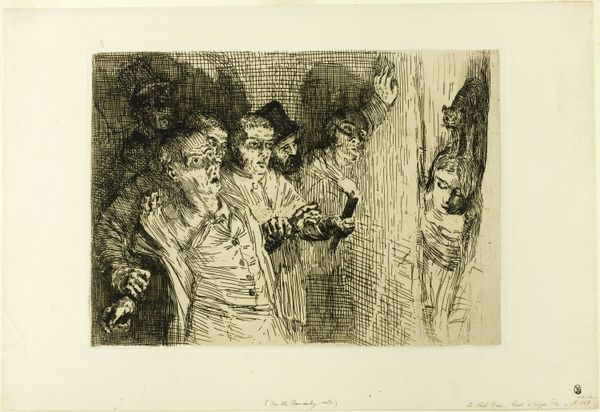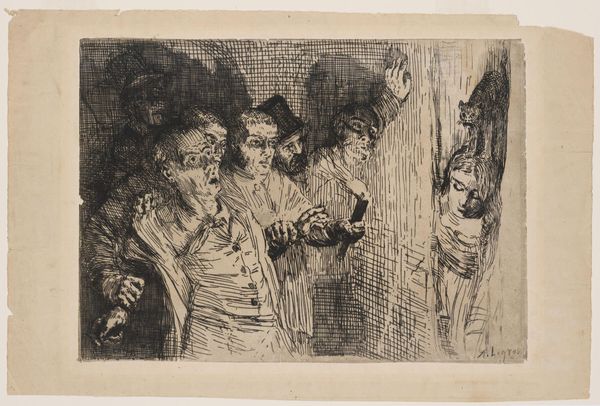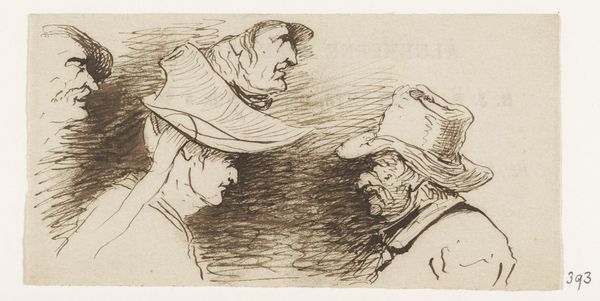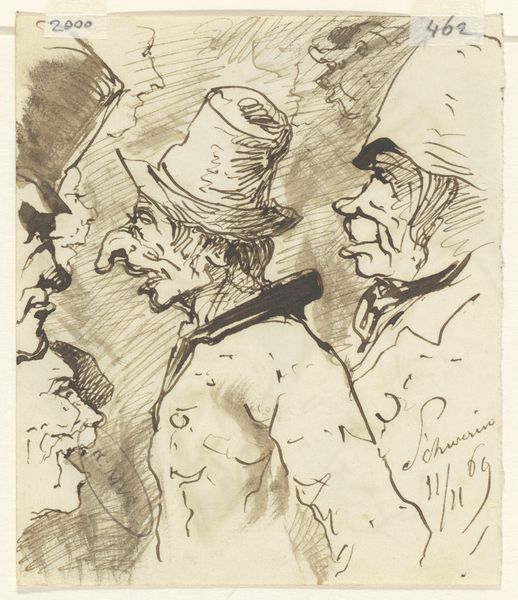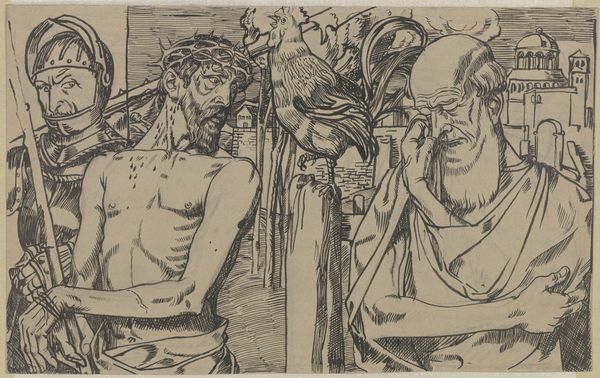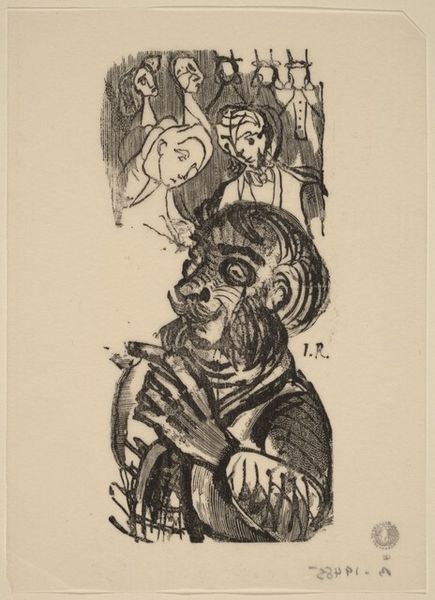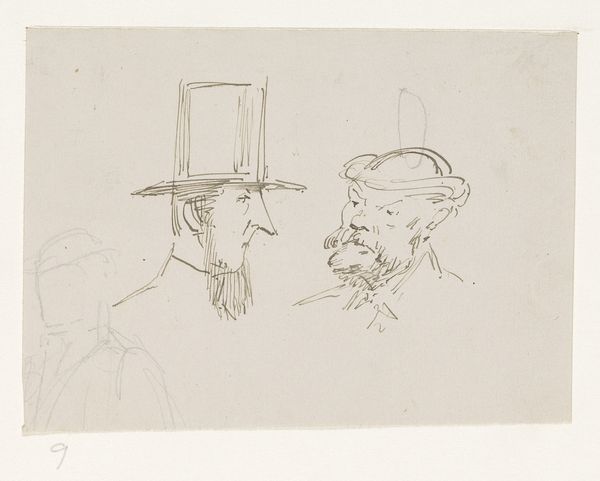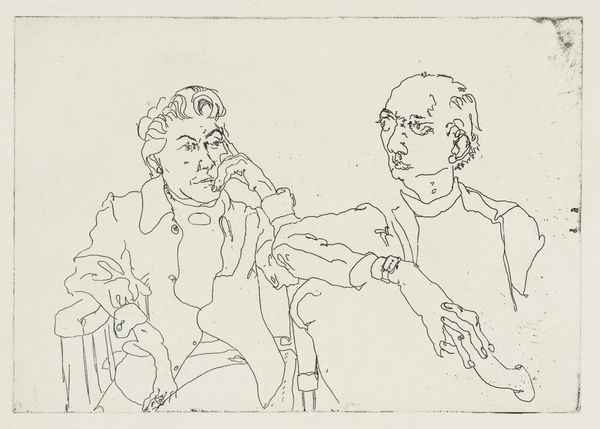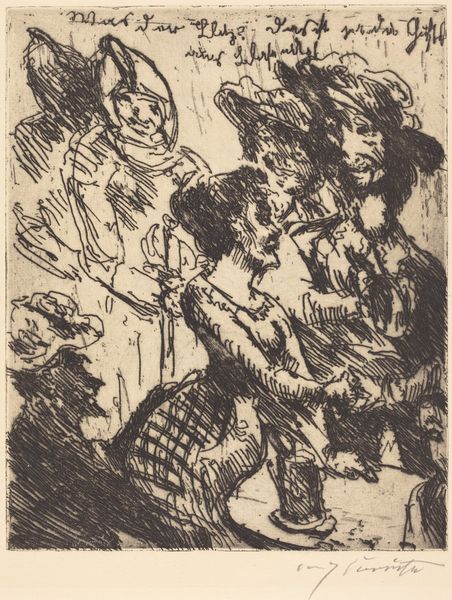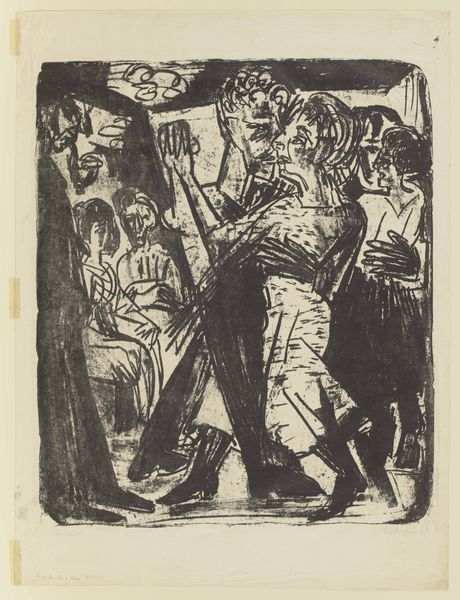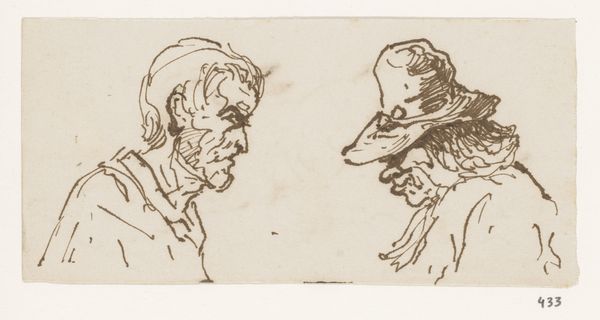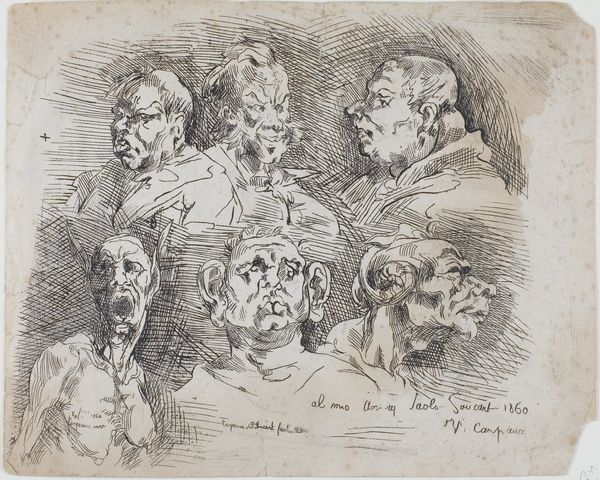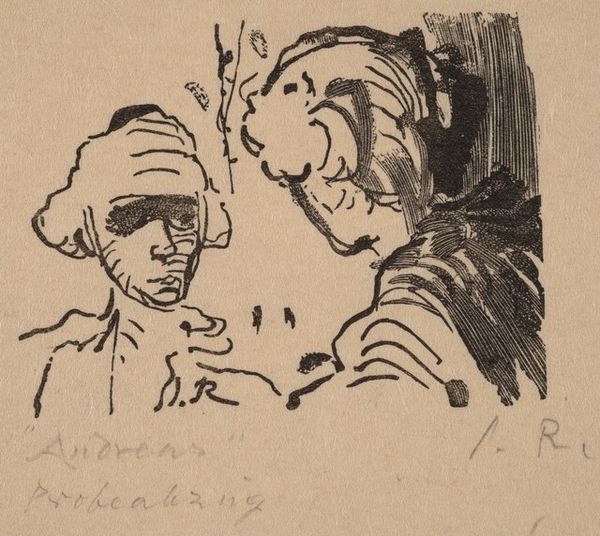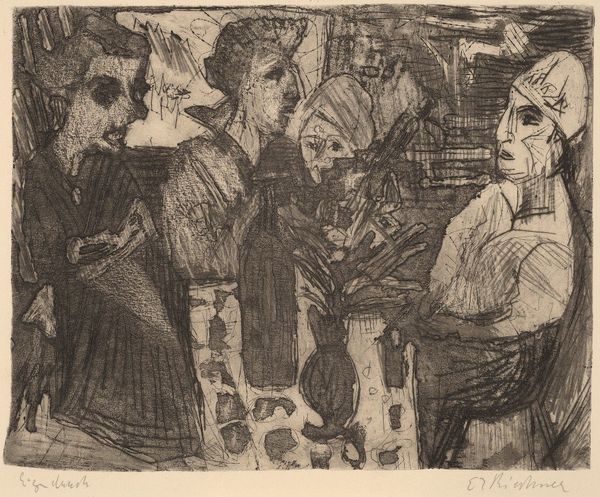
print, ink, engraving
#
ink drawing
# print
#
figuration
#
ink
#
nude
#
engraving
Copyright: National Gallery of Art: CC0 1.0
Curator: So, let's turn our attention to Imre Reiner's 1948 print, "Four Figures." The work utilizes ink, primarily employing engraving techniques on a printed medium. Editor: My first thought is this feels… fractured. Like shards of glass reflecting different aspects of humanity. There's a definite tension between the figures, or perhaps within them individually. The style kind of makes me think expressionism meets Picasso! Curator: That sense of unease resonates, especially considering the time it was made, right after World War II. There's this undercurrent of disruption reflected in its stylistic fragmentation; Reiner himself, as a Jewish artist who later emigrated, would've experienced a world deeply impacted by social upheaval. Notice how their faces and bodies are somewhat deconstructed yet maintain a degree of somber elegance? It hints at resilience amid disarray. Editor: You're absolutely right. Elegance with an edge of desperation is definitely present. And it isn't just the historical context, but in the raw, almost violent way the ink seems to bite into the paper that communicates that turmoil. Those figures...they're observing each other, they are alienated, trapped in a silent drama. Even the ink work reflects conflict, and is thick enough to almost be a stage setting itself. Curator: The figuration really serves as a critical device. The "nude" tag and these human figures signify classical motifs upended. It showcases an established canon, but is deliberately unsettled to convey discomfort with societal structures of its day. How those institutional systems grapple and reconcile with a scarred post-war environment looms large over how "Four Figures" fits in art historical movements. Editor: I see them, maybe naively, as embodying our fragmented selves. The almost sculptural lines making us realize all that we really are: complex, vulnerable, a mix of refined aesthetics and primal urgency! Curator: It’s precisely that tension, the historical versus the personal, which gives it staying power. Art’s public role isn’t simply mirroring life but actively processing it. Reiner’s “Four Figures” allows us a moment for such critical processing. Editor: For sure, it definitely offers us a somber glimpse of shattered composure. Curator: An image imbued with echoes and loaded meaning to leave you pondering the weight of silence in history.
Comments
No comments
Be the first to comment and join the conversation on the ultimate creative platform.
